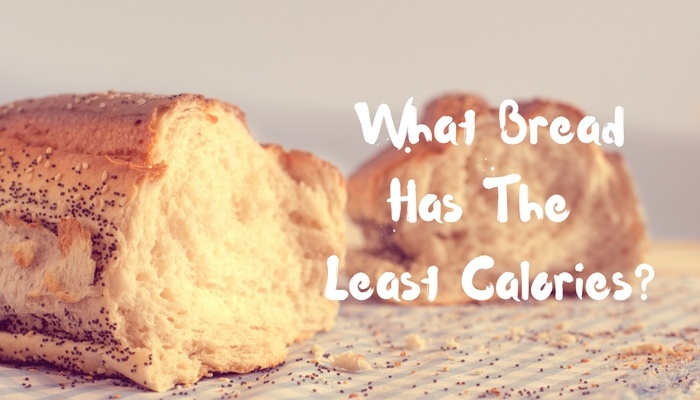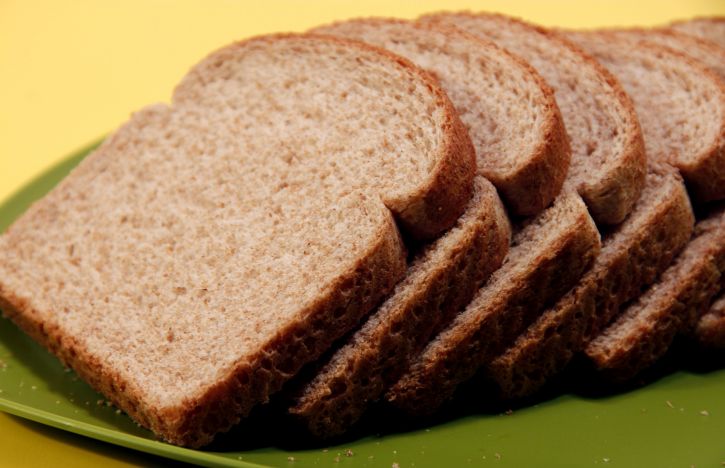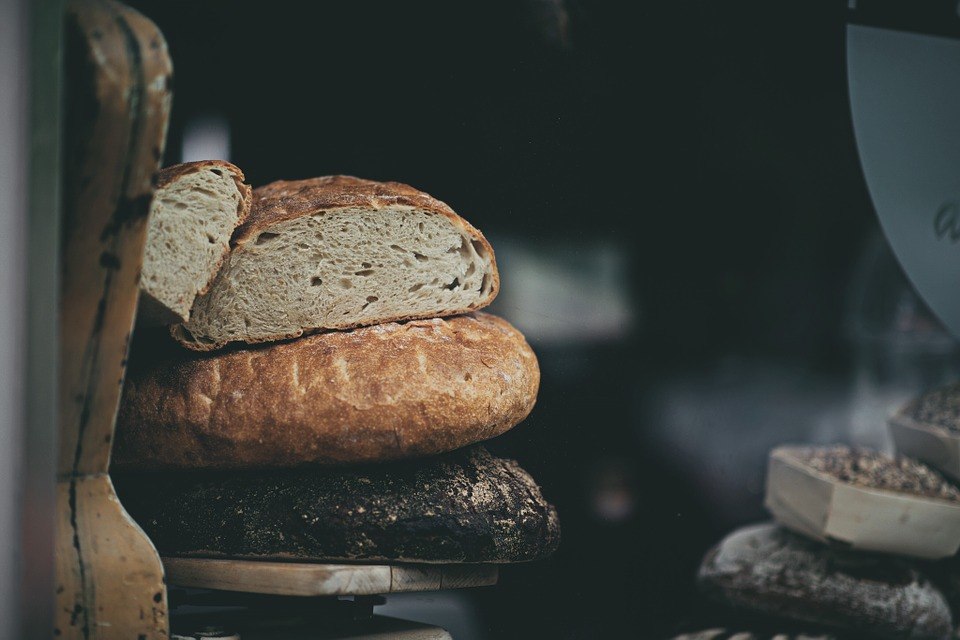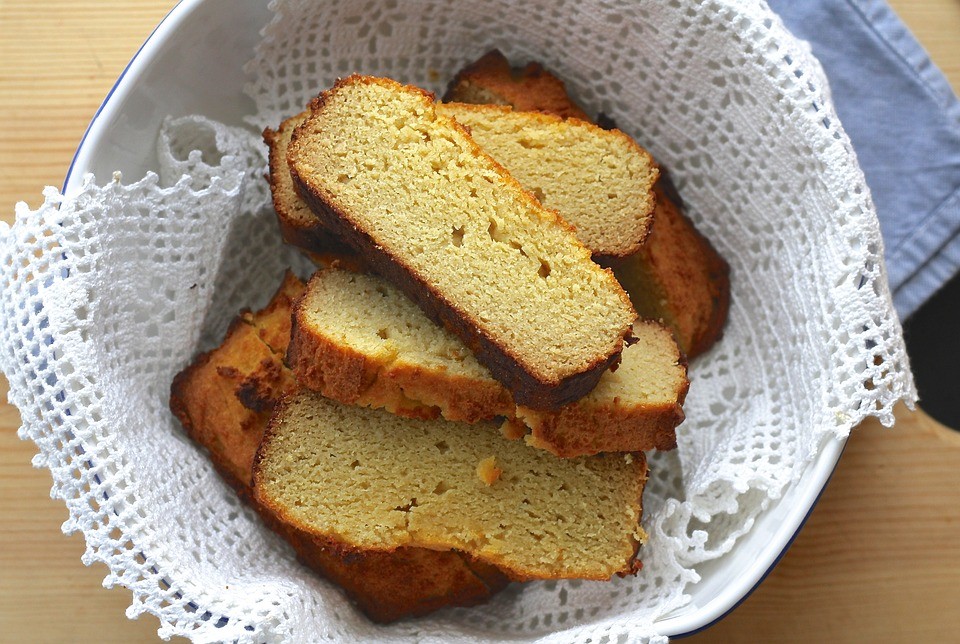Bread is the food of life, as the saying goes. It’s full of good stuff, like fiber, carbohydrates, and nutrients.
All of that keeps the human body humming along, happy, and healthy as can be, and so do the calories that all of those vital things amount up to.
You may well be wondering – what type of bread has the lowest calories?
Calories aren’t a bad thing. They keep us going, and depending on your dietary needs, you may need bread with more or fewer calories.
Always look at the bread calorie count on the packaging for an exact number because many companies have their own unique recipes, but we can still pull an average calorie count out of the works.
First…
What’s in a Loaf?

That’s an excellent question. Ingredients that you’ll find in most breads are sugar, salt, yeast, water, butter/margarine, vegetable, or canola oil, and one or more types of flour.
Some types of bread may also contain eggs, nuts, fruits, and seeds or grains. Your best bet to knowing exactly what is in your bread is to a) make it yourself or b) read through the ingredients listed on the label.
Below is a round-up of the healthiest breads you’ll find in your supermarket or bakery, and we’ll tell you what’s in them, their average calorie count, and how they compare.
What Type of Bread Has The Lowest Calories?
Whole Grain Bread Calories
Multigrain sounds good, and it is, but don’t be fooled into thinking it’s the bee’s knees.
Multigrain bread is essentially white bread with grains added to the dough.
This does make it a healthier alternative to white bread, but whole grain bread is made from whole grain flour. It, therefore, is packed with nutrients that white flour lacks – unless artificial nutrients are added, some of which include iron, protein, Vitamin E, and magnesium.
Wholemeal bread, or whole-grain bread, does have a high carb content, but it is much healthier than some other foods. Wholemeal bread is high in fiber, vitamins, and minerals. If consumed in moderation, it can even help facilitate weight loss and prevent any weight gain.
Daves Killer bread is a great example of a whole grain bread option. A 27-ounce loaf of this bread contains 21 whole grains and seeds, 5 grams of protein, and 5 grams of fiber. The thin sliced Daves Killer bread variety comes to about 70 calories per slice.
Average calorie count per 100g: 259
Whole Wheat Bread Calories

Unlike whole grain bread, which can be made from any whole grain (like oats, wheat, barley, and brown rice), whole wheat bread is only made from milling the wheat kernel.
As whole wheat still uses the entirety of the wheat grain, it still has much better nutritional value than white bread and carries similar benefits to whole grain bread. Wheat bread calories are slightly lower than grain bread calories too.
Average calorie count per 100g: 241
Sprouted Whole Grain Bread
If you are looking for a healthy alternative to white flour or whole grain flour bread, then sprouted whole grain bread is a good option to consider. Not only is it good for you because of the whole grains, but the process used during the process breaks down the protein and carbohydrate content in the grains. This leads to increased vitamin content.
Ezekiel Bread, for example, is a kind of sprouted whole grain bread and is very nutrient-dense. It is made from various legumes and whole grains that had begun sprouting or germinating. The nutrients and fiber are much richer when you compare a sprouted whole grain option like Ezekiel Bread to one made with refined wheat flour.
French and Sourdough Bread Calories
French and sourdough breads are actually some of the healthiest breads around.
Largely, this is in part due to the fact that sourdough is made from only three ingredients: flour, water, and salt. As sourdough is left to rise for far longer than most other kinds of bread, letting the ‘wild yeast’ that naturally occurs in flour get to work, the result is a bread that, on average, contains more minerals and nutrients than white bread and is also easier for the human body to digest.
Through the long rise-time, the phytate levels in the dough are lessened. This is important because phytates bind themselves to minerals, making it much harder for our bodies to absorb them.

Though lower in fiber than whole grain breads, sourdough will make you feel fuller for longer, therefore saving you calories throughout the day.
Average calorie count per 100g: 287
Rye Bread Calories
Rye is a whole grain bread made from rye grain. It’s a good alternative for people who want something healthy and more filling than other breads. Rye has lots of fiber, folate, manganese, and selenium and is low in saturated fat.
Like sourdough, it has a sharper, almost tangy taste and will help you feel fuller for longer too.
Average calorie count per 100g: 259
Pita Bread Calories
Pita bread, traditionally from the Middle East and the Mediterranean, is commonly thought of as one of the healthier breads you can choose.
Although the average calorie count per 100g is around the same as the other breads we’ve been looking at, pita isn’t nearly as dense. It is generally served in lower quantities, so it is usually fewer calories. Plus, it’s very low in fat.
One of the downsides to pita bread is that it can be high in sodium, which can encourage your body to retain water (and weight).
Average calorie count per 100g: 275
Gluten Free Bread

Though gluten-free products are being considered a trendy diet fad at the moment, they aren’t always a healthier alternative – unless, of course, you have been diagnosed with celiac disease.
To make bread without gluten, the flour has to be made from something other than rye, wheat, or barley – the three products that most flour is made from. This means that gluten-free flour is often made of rice flour, tapioca flour, potato starch, and/or buckwheat flour.
Unfortunately, gluten-free bread lacks nutrients and fiber, can have high glycemic counts, and may possess several additives to help the loaf’s taste, texture, and shape.
Given how varied gluten-free bread can be, it’s difficult to find an average for how many calories a loaf contains. In general, most sit around the same levels as the other types of bread that we’ve covered here – but some will have far more or far less.
If you are on a gluten-free diet, carefully read over the ingredients on the label, compare nutritional labels, and find the brand that suits you. Or head to your local bakery and ask what they make their gluten-free bread from.
And don’t forget, you can even try baking it yourself!
See more: How many slices are in a loaf of bread?
Is Low Calorie Bread a Myth?
As you can see, there isn’t much difference between calorie counts in breads – there’s no real low calorie bread, unfortunately.
So long as you aren’t eating sweet breads – like sweet rolls and sugar lacquered pull-aparts – the calories in bread seem to hover between 240 and 290 per 100 grams, which is roughly two half-inch-thick slices of bread. Even white bread calories and pita bread calories sit in that range.
Instead, ask what the healthiest bread is. In that case, either sourdough or whole grain bread is the best bread around.
Is There a Low Calorie Bread Substitute?
If you want to completely eliminate bread for a low carb diet with fewer calories or want other low calorie options, there are a few good low calorie alternatives you can consider. A big-leafed green, for example, lettuce or romaine, can be used as a bread substitute for wraps.
You can fill the lettuce wrap with everything you would have put in a bread wrap, and it is a fresh and low calorie addition to your low carb diet.
Here are a few more bread substitutes you can use:
- 100 whole wheat bread flat buns – yes, this is a bread-based option, but it comes out to around half the calories of regular bread. So, you still have bread, but it is a low calorie and low carb diet option.
- Portabella mushroom caps – this is another low calorie option to bread. Portobello mushroom caps are around 25 calories each and can be baked or grilled to perfection.
- 100 calorie high fiber tortillas – another bread-based option is a 100 calorie or less high fiber tortilla. High fiber options tend to be lower in calories, but you want to make sure to read the label. A low carb whole wheat tortilla is around 90 calories.
Which Bread Is Best for Weight Loss?
Since you are researching low carb bread options, you are probably doing so for weight loss. In this case, the best bread for weight loss will be multigrain bread. It contains barley, wheat, oats, corn, buckwheat, millet, and flaxseeds.
Multigrain bread is high in fiber and other nutrients, which is ideal for weight loss. It also keeps you feeling full for longer, so you can avoid overeating or snacking on unhealthy food options.
Want to make your own delicious bread recipe at home? Make sure to read our guide on finding the Best Bread Machines.
When you make your own bread at home, you control the ingredients you use. So, you can make your bread with a few calories as you want.
Related Reading – Best Homemade High Protein Bread Recipes
Now you know everything about bread calories – any questions?
